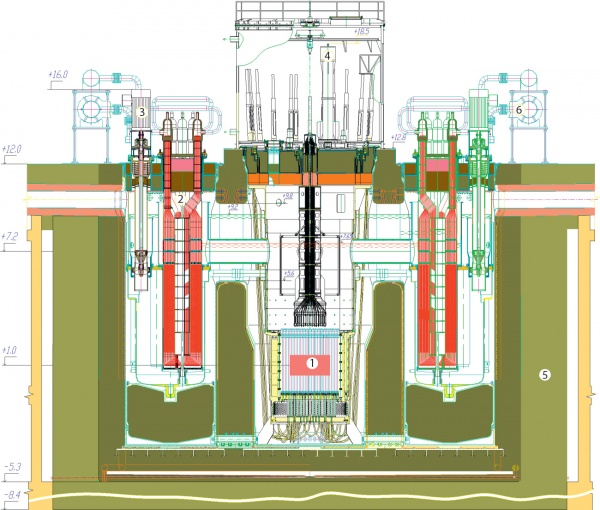The Russians have made a major and long standing commitment to nuclear power. They have been a major exporter of fossil fuels for decades and they would like to also like to become a major exporter of nuclear technology and nuclear fuel. Their government-owned nuclear company, Rosatom is traveling around the world trying to sell Russian reactors and fuel to developing nations. The Russian government is offering to loan other countries the money to build the reactors, to provide trained staff to run the reactors, to provide fuel for the reactors and to remove the waste from the reactors. Some observers express concern that the Russian may attempt to apply political leverage against other nations through control of their nuclear power.
The Russians are currently working on the development of a fast breeder reactor that can burn fuel that is a mixture of uranium and plutonium. Spent nuclear fuel is reprocessed to add to the mixture of materials used to make new nuclear fuel. This is known as a closed-cycle process. The Brest-OD-300 fast breeder is an experimental reactor being developed in the Tomsk Region of Russia. This reactor will be able to burn spent fuel from other reactors as well as its own spent fuel.
The Brest-OD-300 reactor is cooled by lead which makes it much safer than conventional pressurized water or sodium cooled reactor cores. Lead itself is a radiation shielding material. It has a high boiling point which severely reduces the danger of a pressure explosion. Unlike sodium, if there is a breach, it will not react explosively with water or air.
In order to produce the new type of fuel for the new reactors, Russian nuclear engineers have developed a new furnace design that bakes the special uranium-plutonium nitrate fuel pellets for the closed-cycle reactors. Six fully automated high-temperature radiation-resistant furnaces was built and tested in the Russian city of Bryansk. The new furnace system is ready to be shipped to the Tomsk Region to be used on site with the Brest-OD-300 experimental reactor where it will be used to make new fuel from spent fuel.
The use of the nitride uranium-plutonium fuel pellets instead of the conventional uranium and plutonium oxides fuel pellets provides a number of benefits. These new fuel pellets have increased fissionable density which reduces the amount of fuel needed. They have greater thermal conductivity which improves the circulation of heat from the core. They have a higher melting temperature which makes them less vulnerable in case of an accident that raises the temperature of the core. They are less prone to swelling and mechanical deformation. All of these factors combine to make it possible to burn a set of fuel rods containing these pellets for longer periods of time than conventional fuel rods.
One concern of the international community is that fast-breeder reactors and attendant fuel reprocessing create and refine plutonium which can be used to build nuclear weapons. Agencies and individuals who are working on global nuclear disarmament are opposed to any reactor technology which produces and refines plutonium.
Brest-OD-300 experimental reactor diagram:
